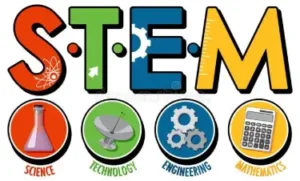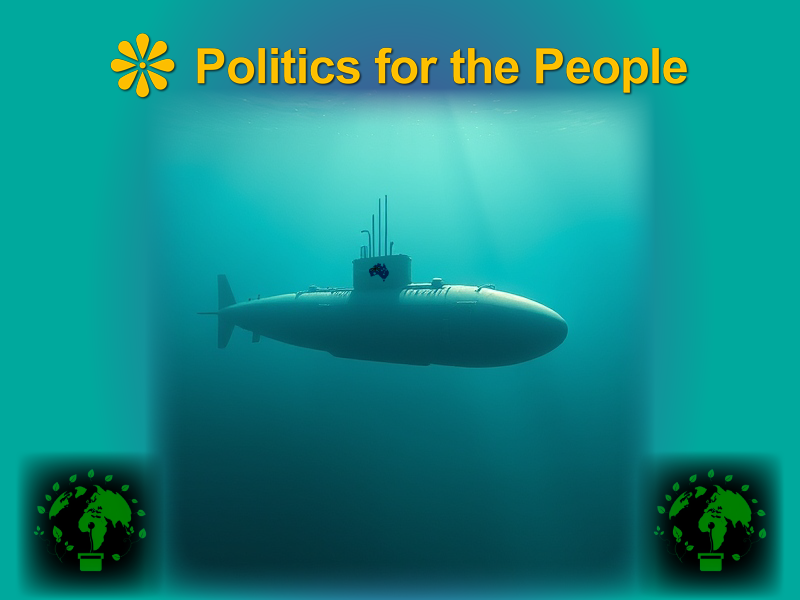Description
As Australia adds 4,000 new STEM spots for AUKUS, a debate about STEM AUKUS vs green future appears: Should our focus be on military tech or on becoming a global leader in green technology and peace? Dive into the discussion.
Introduction
In a recent move by the Australian federal government, universities across the nation have been given the opportunity to apply for an added 4,000 Commonwealth-supported places (CSPs), specifically aimed at graduates in STEM (Science, Technology, Engineering, and Mathematics) fields.
This initiative is part of a broader strategy to prepare workers for roles within the AUKUS alliance, potentially enhancing Australia’s capabilities in defence and technology.
However, this development prompts a significant question: Should Australia continue down the path of military advancement, or could we carve out a role as a global leader in green technology and peace?
Expanding STEM Education: A Strategic Move for AUKUS
Long-term Implications for Technological Development
While initially aimed at bolstering Australia’s defence capabilities, the infusion of 4,000 new Commonwealth-supported places (CSPs) in STEM fields holds vast potential for peaceful scientific endeavours.
This strategic enhancement of STEM training can be a pivot point for channelling Australia’s scientific resources towards promoting global peace and sustainability. Here’s how:
Promoting Peace through Advanced Technologies

STEM education equips graduates with the skills to innovate and solve problems through technology. By directing these skills towards peaceful applications, such as developing advanced agricultural technologies to combat food insecurity or creating more efficient renewable energy systems, STEM professionals can play a crucial role in building a more stable and peaceful world. These technologies not only address immediate needs but also foster long-term partnerships between nations, enhancing global cooperation and stability.
Technology in Disaster Relief and Humanitarian Efforts
STEM-trained professionals can significantly contribute to disaster relief operations and humanitarian efforts by innovating solutions that improve efficiency and effectiveness.
For example, engineers can develop more resilient infrastructure to withstand natural disasters, while data scientists can perfect resource distribution during crises using predictive analytics.
Such contributions not only aid in immediate relief efforts but also build abilities for dealing with future challenges, reinforcing global peace efforts.
Enhancing Global Health
Advancements in medical technology, driven by skilled STEM professionals, can lead to better health outcomes worldwide, which is a fundamental aspect of global peace.
By developing new medical treatments and public health strategies, scientists and engineers can help combat global health crises, reducing the burden of disease and improving quality of life across borders.
This not only alleviates suffering but also reduces health disparities, contributing to a fairer world.
Environmental Sustainability and Peace
Environmental degradation is a significant driver of conflict; therefore, applying STEM skills towards environmental conservation and sustainability can indirectly promote peace.
Innovations in water purification, waste management, and sustainable agriculture designed by STEM professionals can help mitigate resource scarcity, a common catalyst for conflicts.
By ensuring fair access to resources, these innovations promote a stable and peaceful coexistence.
Educational Outreach and Global Collaboration
STEM education fosters a culture of collaboration and knowledge sharing, which are essential for peaceful coexistence. Educational programs that encourage international collaboration not only spread knowledge but also build mutual understanding and respect among diverse cultures.
These interactions can lead to joint research endeavours and partnerships that transcend political and geographical boundaries, fostering global peace.
In conclusion, the long-term implications of expanding STEM education go beyond strengthening Australia’s defence capabilities. By harnessing the full spectrum of STEM applications towards peaceful and humanitarian projects, Australia can significantly contribute to global stability and peace, aligning technological advancement with its longstanding values of peace and sustainability.
The Case for Green Leadership and Peace
Australia’s Legacy of Peace and Sustainability
Australia has long held a reputation as a nation committed to peace and environmental stewardship. From its role in regional peacekeeping missions to its unique natural heritage, Australia has shown an ability to balance economic growth with environmental preservation.
However, in the face of escalating global challenges such as climate change, biodiversity loss, and resource depletion, this legacy now requires renewed focus and leadership.
Australia is particularly well-placed to champion a transition to sustainable practices given its vast renewable energy potential, including abundant solar, wind, and tidal resources. As a nation with a rich Indigenous heritage, Australia can also incorporate Indigenous knowledge systems into its sustainability strategies, drawing on traditional land management practices that emphasize environmental harmony.
By embracing these approaches, Australia can redefine its role as a global leader in peace and sustainability, showing that economic progress does not need to come at the expense of the environment.
Moreover, Australia’s leadership in this area would reflect its commitment to promoting global stability. Climate change, as a driver of conflict and displacement—particularly in the Pacific region—requires urgent international cooperation.
By setting an example of responsible environmental policies and advocating for climate action on the global stage, Australia can position itself as a champion of peaceful solutions to resource-driven conflicts, helping to build a safer and more sustainable future.
Economic and Environmental Benefits of Green Technology
The transition to green technology is more than an ethical or environmental necessity; it stands for a significant economic opportunity with far-reaching benefits. Investing in renewable energy, such as solar, wind, and hydrogen, can position Australia as a leader in the burgeoning green economy while simultaneously reducing reliance on volatile fossil fuel markets.
As demand for clean energy grows globally, Australia’s vast renewable energy resources and expertise can attract international investment and open new export markets.
Economic opportunities extend beyond energy production. Green industries, including eco-friendly infrastructure, electric vehicles, sustainable agriculture, and circular economy initiatives, offer the potential to create thousands of new jobs across urban, rural, and regional communities.
For example, investments in solar farms, wind turbines, and battery storage systems require engineers, technicians, and tradespeople, stimulating job growth in areas often left behind by economic transitions.
Similarly, sustainable agriculture practices, such as regenerative farming, can improve soil health, increase yields, and bolster rural economies while reducing environmental impacts.
Furthermore, the shift to green technology fosters long-term economic resilience. By reducing dependence on fossil fuels, Australia can protect itself from global energy price shocks and secure energy sovereignty. Investment in renewable energy infrastructure also lowers long-term energy costs for businesses and households, providing economic relief and improving national competitiveness.
The environmental benefits are equally profound. Green technologies help cut greenhouse gas emissions, mitigate climate change, and preserve ecosystems critical to Australia’s agricultural and tourism industries. Additionally, improved air quality and reduced pollution contribute to better public health outcomes, reducing healthcare costs and improving the quality of life for Australians.
Australia’s natural advantages, including its geographical positioning and expertise in innovation, offer a unique opportunity to become a global hub for green technology development and exports. Collaborations with regional neighbours and Pacific nations on sustainable energy projects can further solidify Australia’s leadership role, fostering diplomatic ties and supporting peace through shared economic progress.
By embracing green leadership, Australia can simultaneously drive economic prosperity, environmental responsibility, and global peace-building efforts. A transition to a greener economy not only secures Australia’s future but also sets a precedent for the world, highlighting how economic growth and sustainability can work hand in hand to create a healthier, fairer planet.
Navigating Between Military Advancement and Global Sustainability
Balancing Technological Growth with Ethical Responsibilities
The expansion into STEM for military purposes presents ethical questions, particularly about the balance between national security and global peace initiatives. Australia’s participation in the AUKUS alliance underscores the need for advanced military technology, yet this must be weighed against the global call for disarmament and peace.
The Role of Education in Shaping Australia’s Future
The direction of Australia’s educational investments will significantly influence its future role on the world stage. By prioritizing STEM education with a focus on sustainability and peace, Australia could cultivate a generation of professionals who not only advance technology but also champion eco-friendly solutions and peace.
Conclusion
The recent expansion of CSPs in STEM fields marks a critical point in deciding Australia’s trajectory. While enhancing our technological and defence capabilities is crucial, it is equally important to embrace our heritage of fostering peace and sustainability. The path we choose now will define our role in the world and the legacy we leave for future generations.
Question for Readers
What direction do you think Australia should take in the STEM AUKUS vs green future debate? Should we invest more in military technology, or should we become a global leader in green technology and peace initiatives?
Call to Action
Let’s shape the future of Australia together. Share your views on this pivotal issue and spread the word by sharing this article with your contacts and on social media. Every voice counts as we strive for a sustainable and peaceful future.
References:
4000 more uni places for AUKUS workforce: https://ministers.education.gov.au/marles/4000-more-uni-places-aukus-workforce
Government’s STEM focus turns to AUKUS, and peace advocates are worried: https://www.theeducatoronline.com/k12/news/governments-stem-focus-turns-to-aukus-and-peace-advocates-are-worried/283166

